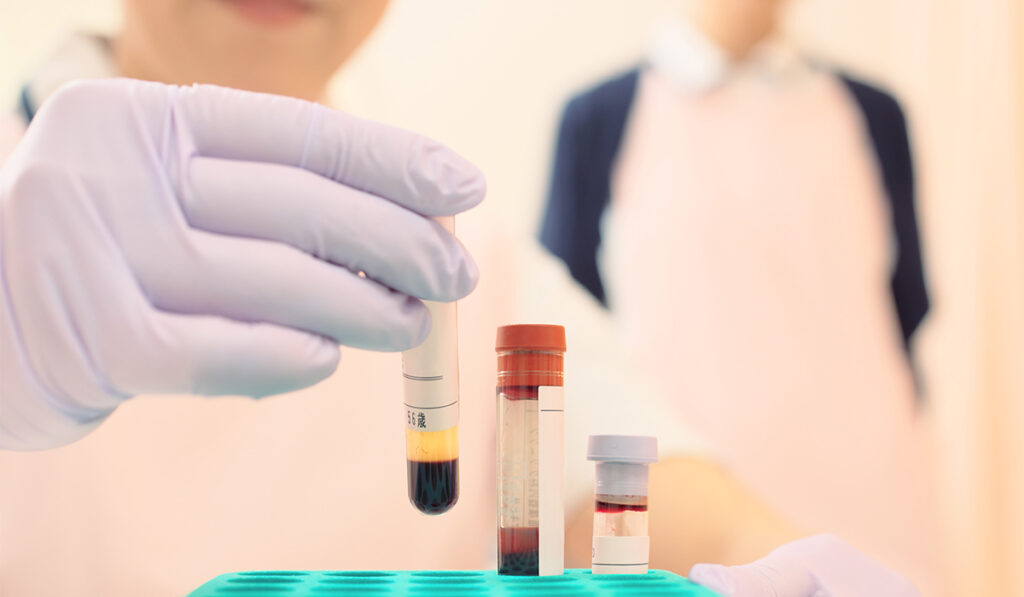Connective tissue disease-interstitial lung disease (CTD-ILD) is sometimes misdiagnosed as idiopathic pulmonary fibrosis (IPF) in the absence of clear autoimmune features. The resulting treatment delays can contribute to irreversible disease progression and lead to respiratory failure. Conversely, a patient with IPF can be harmed by immunosuppression if misdiagnosed as CTD-ILD.
Erin Wilfong, M.D., a clinical instructor at Vanderbilt University Medical Center and one of a handful of U.S. physicians with dual training in rheumatology and pulmonology critical care medicine, is working to better identify CTD-ILD that falls into a clinical gray zone.
“The spectrum of CTD-ILD is broad, and patients with mild extrapulmonary symptoms might be missed,” Wilfong said. “My mission is to build improved infrastructure and systems for recognizing and studying CTD-ILD, and to figure out who benefits from immunosuppression and who doesn’t.”
“The spectrum of connective tissue disease-interstitial lung disease (CTD-ILD) is broad, and patients with mild extrapulmonary symptoms might be missed.”
A Diagnostic Conundrum
Patients with CTD-ILD who are promptly treated with immunosuppression can resolve lung inflammation and have improvement, or even near normalization, of their lung function. However, if these patients are misdiagnosed with IPF, there is a missed opportunity for treatment.
CTD-ILD patients may lack obvious extrapulmonary manifestations. Symptoms can be as mild as cracking of the skin on the fingers (mechanic’s hands), changes in the cuticles, or darkness of the eyelids (heliotrope rash). “For practitioners who aren’t experts in rheumatologic skin exams, these may be missed,” Wilfong said.
Conversely, IPF patients misdiagnosed with CTD-ILD not only lose time before receiving needed anti-fibrotic treatment, but may be harmed by the prescription of immunosuppressants. “Misdiagnosis of IPF can markedly increase the risk of irreversible lung scarring that can lead to hypoxic respiratory failure and death,” Wilfong said.
Wilfong has previously published on the limitations and challenges of diagnosing CTD-ILD, which is not comprehensively informed by the American College of Radiology classification criteria for idiopathic inflammatory myopathies nor the American Thoracic Society criteria for interstitial pneumonia with autoimmune features.
Creating a CTD-ILD Biorepository
Wilfong is principal investigator of the Vanderbilt Myositis and Scleroderma Treatment Initiative Center Cohort, which aims to improve the understanding of CTD-ILD. The research team is developing a large biorepository and longitudinal registry of patients with autoimmune conditions that are predisposed to lung disease, as well as patients with undifferentiated lung disease who may or may not have CTD.
The biorepository will help identify who benefits from immunosuppression and why, as well as pathways of immune dysregulation for targeted treatment.
“Rather than use traditional immunosuppressants that kill immune cells indiscriminately, our long-term goal is to find cell-based biomarkers for these diseases based on immunophenotyping and then selectively kill the abnormal cell populations,” Wilfong said.
Best Practices for Diagnosis
Wilfong explains that every patient referred to Vanderbilt for a new ILD consult has a comprehensive serologic screening for autoimmunity to improve the recognition of CTD-ILD. The screening includes immunofluorescent anti-nuclear antibodies (ANA), rheumatoid factor, anti-cyclic citrullinated peptide, anti-neutrophil cytoplasmic antibodies (ANCA), and an extended myositis panel.
“It is better to rule out connective tissue disease in the two-thirds who have a false positive than to miss the one-third who might otherwise have been misdiagnosed.”
Not every serologic test is highly specific, so anyone with a positive serology is referred to a rheumatologist for CTD evaluation. “It is better to rule out connective tissue disease in the two-thirds who have a false positive than to miss the one-third who might otherwise have been misdiagnosed,” Wilfong said.





